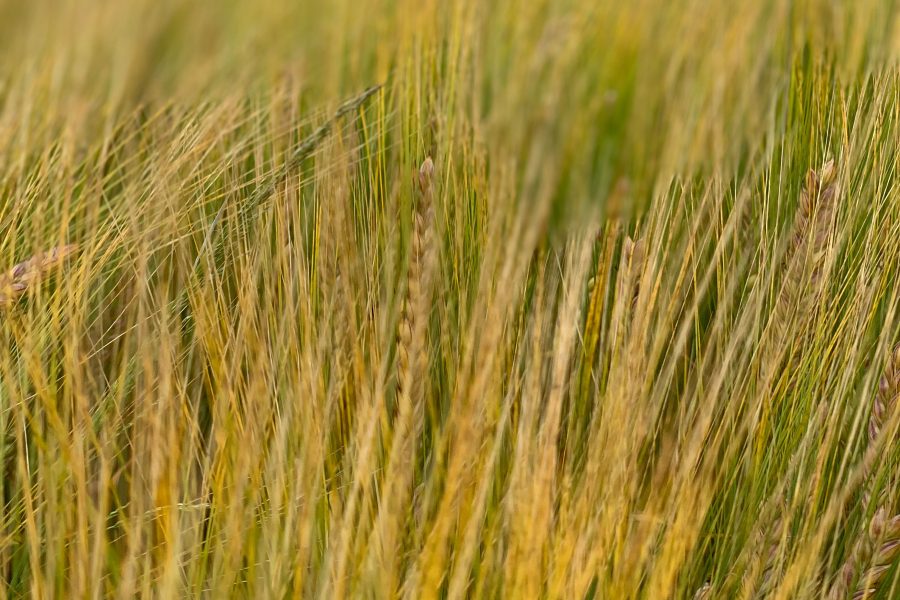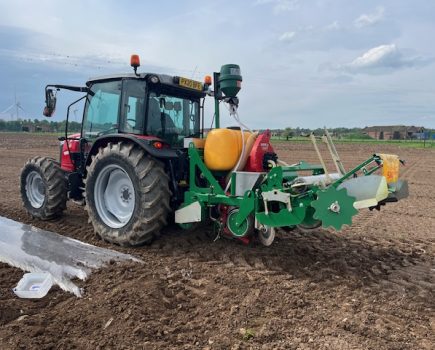Spring barley was a get-out-of-jail card for some growers last season after wet weather prevented autumn drilling, yet many crops went on to deliver above average yields.
Why they performed so well owes much to the age-old issue of tiller retention, says Limagrain Field Seeds arable technical manager Ron Granger.
Below, Mr Granger outlines six ways to get the most from spring barley this coming season.
1. Understand end market or contract requirements
Depending on the locality and the opportunities for selling to different end users or export markets, the barley crop you grow and the agronomic inputs required will be determined by the sector you target.
End user requirements will influence many agronomic decisions, particularly nitrogen strategy, so it is essential growers are clear about the quality criteria that must be met.
This is particularly true for those dependent on hitting a certain grain nitrogen percentage to achieve the contract premium, notably distilling, which requires 1.65% N or lower, brewing 1.65-1.85%, and grain distilling at 1.85%+. Grain nitrogen, generally, is not a concern for animal feed.
2. Choose the right variety
In many instances, variety choice is also determined by the end user or contract chosen.
However, for those still to decide what to grow, consider one of the proven, dual use variety’s, such as LG Diablo, which has good yield performance, with several end market opportunities.
Choosing a variety with greater tillering ability drives yield, and having more tillers helps crops compensate for tiller loss should stressful conditions arise.
3. Wait for good drilling conditions
Barley must go into a good seedbed with warming soils and temperatures to germinate and establish quickly, with continued plant growth, so patience is required to wait for the right window of opportunity.
Limagrain trials show earlier drilling in spring can improve yield potential, however, this is mainly only possible on lighter, more free-draining land, that will dry and warm quicker than a heavier soil type.
Early drilling will significantly increase disease risk, so consider more disease resistant varieties for this situation.
Weeds compromise crop establishment and tillering capacity, so drill into good conditions, and control early weed growth with effective chemistry sets that do not “knock” early plant development.
4. Optimise seed rate
For high yield potential, aim for a final tiller count of 775–800 /m², and work back from this to calculate seed rate, varying according to soil type, drilling date, seedbed conditions, weather.
A survey of more than 100 growers by Limagrain in 2022 showed half (49%) of growers were typically sowing spring barley at 300-350 seeds/m2 and most (76%) targeting a yield of 8 t/ha.
Limagrain trials comparing variety seed rates over various seasons and regions suggest that with more vigorous, higher tillering varieties, such as LG Diablo, the optimum seed rate is 350 seeds/m2 when drilling into ideal conditions around mid-March.
However, this should be adjusted up or down depending on the weather, seedbed quality, moisture availability, drilling date, and the growers’ own experience on each site.
A lower rate of 300-325 seeds/m2 could suffice if drilling into an “onion bed” in March, but when forced to drill into April due to the weather, or agronomic reasons, such as black-grass control, pushing rates up to 400 to 450 seeds/m2 may be more appropriate to achieve the optimum final ear number and a competitive crop in a black-grass situation.
5. Maintain tiller number
Once crops are established, the best way to achieve high spring barley yield potential is to ensure high final ear counts. The AHDB Barley growth guide suggests final target ear population should be around 775 ears/m2.
An 8-9 t/ha crop needs around 800 ears/m2, which at a 350 seeds/m2 rate, equates to around 2.5-3 tillers per plant at harvest.
In some seasons, prolonged dry periods can cause crops to drop tillers and reduce yield potential, but last year, plentiful moisture availability throughout the growing season benefitted many spring crops, especially on lighter land. We cannot control the weather, but laying strong foundations at establishment will help crops produce and retain as many tillers as possible.
6. Optimise inputs
Balanced macro and micro nutrition improves rooting and canopy development, which benefits tiller survival. Apply most nutrition early, to the seedbed or soon after drilling.
Spring barley has often been seen as a lower input crop, with growers reluctant to increase nitrogen application rates in fear of exceeding maltsters grain nitrogen limits, but don’t be afraid to push new, higher tillering varieties with more nitrogen. Higher yielding varieties respond positively to higher nitrogen inputs, due to their increased yield potential and dilution of grain nitrogen content.
In continued LG trials, an extra 30 kg N/ha applied in the second split generated 0.5-1 t/ha extra yield in some varieties, with crops still achieving low grain N.
Alongside nitrogen, optimising other macronutrients, such as phosphate, potash, magnesium and sulphur, has proven beneficial to tiller retention and final yield.
Tissue analysis of the young growing crop can help identify any shortfalls in nutrition before visible symptoms appear and is a relatively inexpensive way of targeting a high yielding crop.
Additional micronutrients, such as manganese, zinc, copper, iron, and boron, applied at the stem extension phase into flowering, are also useful, ensuring a healthy crop and good ear fertility, whilst also helping secure high grain number and maximum yield potential.
Also consider early growth regulator applications on crops to promote rooting and strong uniform tillering.
At least two fungicides are recommended to maintain tiller number and healthy plants, including the awns, for maximum grain development. Typically, the first application is at GS 25-31, with the second targeted between GS 39-55.
Spring barley can move through growth stages quickly, so close monitoring of the growing crop is essential for accurate application timings of product.
Six steps to barley success
- Understand end market or contract requirements
- Choose the right variety
- Wait for good drilling conditions
- Optimise seed rate
- Maintain tiller number
- Optimise inputs
For more info, see Limagrain’s spring barley agronomy videos: bit.ly/3jHEZwY
For more like this, sign up for the FREE South East Farmer e-newsletter here and receive all the latest farming news, reviews and insight straight to your inbox.







